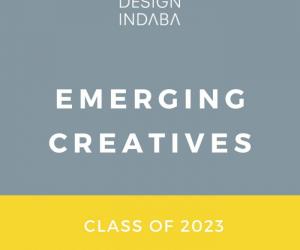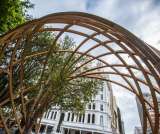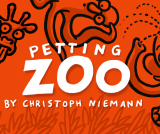Part of the Project
When Lucas Adams, an industrial design student at Cape Peninsula University of Technology, launched his Luna light at the 2012 Design Indaba Expo, he was taken aback at the avalanche of sales that hit.
“I sold about 80 percent of my stock on the first day the Expo was open to the public,” said Adams, one of 40 young designers who took part in the Emerging Creatives programme this year. The designers, who are selected by curators, must all be at the outset of their careers to qualify. With sponsorship from the Department of Arts and Culture, they are given space to market themselves alongside their more established peers and, in many cases, flown to Cape Town from around the country.
Adams’ nifty little task lamp, combining an adjustable plywood arm with a paper shade, touched on current tastes for design with an honest, back-to-basics look and feel. By midday on Saturday, he had sold out of his lights as well as half of his second product, a cork pinboard in the shape of giant puzzle pieces. The ever-industrious Adams found other ways to keep the sales flowing. “I made provision for EFT payments. This formed the medium for the majority of my sales, and also served as a way to sell on an order basis – selling without actual stock in hand.”
Adams’ business, Kraftisan, achieved total sales of between R16 000 and R18 000 during the four-day event – not bad for a guy still in college. And immediately after the Expo, his website saw a major surge in traffic, with additional sales realised a week later. He is now working on a collaboration with a major national homeware retailer.
Kraftisan’s success attests to the business vehicle that the Emerging Creatives platform can offer designers at the start of their careers.
According to a survey conducted by Design Indaba, the total value of sales and orders placed during and after the 2012 Expo was R211 200 for 21 of the 40 Emerging Creatives who responded. The total value is much higher and will grow as many designers continue to negotiate with buyers placing orders.
Fuelling this year’s swift sales was the Expo’s first dedicated Buyers Day, held a day before the event opened to the public. Cath Price, a young ceramicist said, “Before I came to Design Indaba, my best sales weekend earned me R6 500 – at the Expo I made over R30 000 in sales and trade orders.”
Songezo Baleni, a jewellery design student from Durban, turned over R15 000 in sales from his unusual woven silver pieces. He has had follow-up orders placed after the show and he even been offered a job by jewellery manufacturer Silplat and legal services from firm Adams & Adams.
The four-day event exposed the Emerging Creatives to local retailers and international distributors. Famke Koene now stocks five Cape Town shops and an online store in Los Angeles, Gourmonde, with her geometric jewellery. She made R19 680 in actual sales to the public and sold out of five different designs.
Leon van Rooyen of Van der Vlam received an order of 30 lamps from Vienna-based shop Habari, which specialises in African art and design.
Claudette Maskell from We-Flock got her screenprints into Cape Town shops Vamp in Woodstock and Marigold in Oranjezicht, while Caryn Fourie from A Bird Named Frank received an order of her upcycled jewellery from Cape Best, a shop in Milan. “Our efforts in preparing for the Expo, together with the subsequent exposure, response and sales gave our business an enormous growth spurt,” said Fourie.
The Emerging Creatives programme is more than a well-loved feature on the Expo floor; it is an opportunity that can be harnessed for its ability to generate sales. “It was a true eyeopener in terms of exposing myself to a larger audience in a very short space of time,” said Lucas Adams, who also received legal services from Adams & Adams to trademark his brand. “The contacts, the support, the sales, and the experience have all reinforced my current path and have given me three times the determination to go forward!”




















